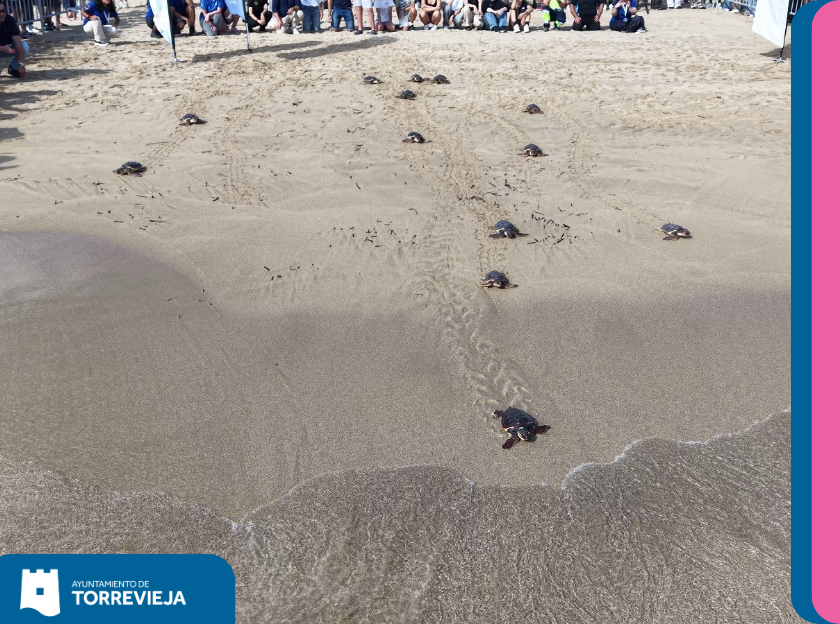Sixteen sea turtles born in 2024 were released this week at La Mata beach. They arrived from the nest of the turtle “Pura Vida” on Los Locos beach. Their eggs were carried to La Mata and hatched. After a year of controlled breeding at the Oceanogràfic in Valencia, the animals were released into the sea for the first time today in front of a big crowd that included representatives from various institutions, education, and communities.
In the summer of 2024, residents and tourists were shocked to discover a nest in the centre of Torrevieja’s urban sandbanks. “Pura Vida” deposited 64 eggs, which were carefully kept by volunteers and environmental technicians until they hatched and were released into the water today.
Six eggs were carried to the Oceanogràfic as part of the Foundation’s Head Starting project, while the remainder were incubated on La Mata beach using conservation techniques. After hatching, 10 more hatchlings joined the original six, bringing the total to sixteen that entered the sea today.
Beginning to strengthen the survival of the species
The animals spent the first twelve months under veterinary observation, receiving an appropriate food, frequent exams, and environmental monitoring. This effort intends to improve survival rates during the most important stages of the loggerhead turtle’s life, when natural mortality is highest.
Torrevieja was chosen as the release site because it exemplifies the philopatry principle, which states that adult females return to the same place where they were born decades later to lay eggs. Respecting this spatial relationship is critical to sustaining the recolonisation of beaches in the western Mediterranean, which is becoming increasingly widespread.
The event was attended by Rosario Martínez, Deputy Mayor and Councillor for Tourism of Torrevieja City Council; Antonio Vidal, Councillor for Environment and Beaches; and Juan Antonio Pujol, municipal biologist; along with representatives from the Local Police, beach maintenance and cleaning teams, and volunteers who guarded the nests.
The Oceanogràfic Foundation took part with technical conservation, education, and volunteer teams. They were joined by 45 first-year high school students from the IES Mediterráneo, as well as Torrevieja residents and beachgoers, who were intently watching this historic occasion for the city and marine conservation.
The International Union for Conservation of Nature (IUCN) Red List classifies the loggerhead sea turtle (Caretta caretta) as Vulnerable, citing threats such as loss of nesting grounds, pollution, interaction with fisheries, and climate change.
The Oceanogràfic Foundation works with government institutions, scientists, and the general public to conduct research, rescue, and awareness initiatives to safeguard this species and assure its continued presence in the Mediterranean.









No Comment! Be the first one.